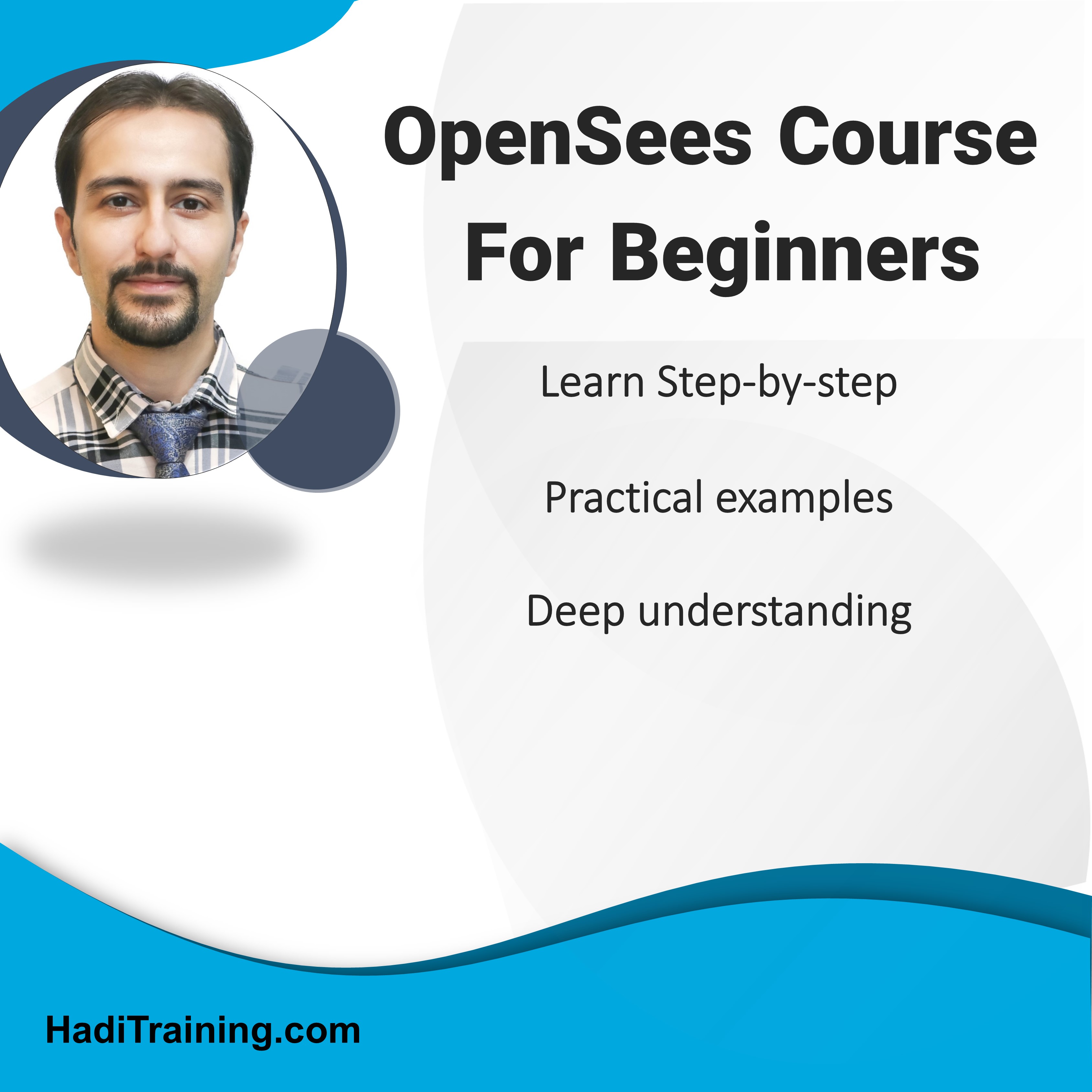
OpenSeesPy Crash Course – Free OpenSees Training for Beginners
-
Programming Language: Python
-
Duration: 2:20
-
Prerequisites: None
-
Language: English
-
Downloadable Resources: Yes
-
Q&A Support: No
-
Instructor: Hadi Eslamnia
-
Access: Yes
Price:
$0About Course:
This course has not yet been uploaded or activated on the website. Please do not enroll in it at this time.
This free, hands-on crash course is a fast-track introduction to OpenSeesPy, the Python-based interface of the powerful OpenSees finite element platform. Whether you’re a student, graduate researcher, or structural engineering professional, this course provides everything you need to get started—without any prior experience in OpenSees or Python.
You’ll learn the theoretical background, step-by-step modeling workflows, pushover analysis techniques, and how to automate output and visualization
🧭 Course Structure Overview
🧩 Chapter 1: Introduction & Installation
Build a strong foundation in OpenSeesPy by learning key modeling concepts and getting your system ready for simulation.
🟡 Topics Covered:
- Strengths and limitations of OpenSeesPy
- Micro vs. macro finite element modeling approaches
- Comparison with commercial tools (ETABS, ABAQUS)
- Unit system and coordinate conventions
- Installing OpenSeesPy using Anaconda
- Setting up necessary Python libraries
🧩 Chapter 2: Elastic Beam Modeling
Dive into your first structural model with an elastic cantilever beam and understand the complete modeling and analysis workflow.
🟡 Topics Covered:
- Step-by-step beam modeling in OpenSeesPy
- Applying boundary conditions and loads
- Running the simulation and extracting results
- Visualizing models with:
- vfo (Visual For OpenSees)
- opsvis (OpenSees Visualization)
🧩 Chapter 3: Nonlinear Frame & Pushover Analysis
Advance to real-world applications by modeling a nonlinear steel frame and performing a pushover analysis using Python-based automation tools.
🟡 Topics Covered:
- Applying point and distributed loads
- Understanding element and section axes
- Defining nonlinear fiber sections
- Using forceBeamColumn elements
- Configuring pushover analysis
- Automating convergence and cyclic loading
- Post-processing & plotting pushover curves
📦 Included with the Course
✅ Downloadable Python code files for all models and analyses
✅ Ready-to-run examples for both elastic and nonlinear simulations
✅ Scripts for visualization and automated post-processing
🌟 Why Take This Free Course?
✅ Free Access – No hidden costs
✅ Beginner Friendly – Learn OpenSees from scratch
✅ Reusable Code – Full access to ready-to-use scripts included
📢 Important Note
💡 No prior experience is needed.
This course is suitable even if you have never worked with OpenSees, Python, or structural modeling software. Every step is clearly explained from the ground up.
🚀 Get Started Now – It’s Free!
Unlock your journey into computational structural analysis with this beginner-friendly, free OpenSeesPy course.
Course Chapters

Introduction and install opensees
20:00

Introduction to OpenSees
4:00

Comparison of opensees etabs abaqus
5:00

Unit and coordinate system
4:00

install OpenSeesPy
7:00

Elastic cantilever beam example
39:00

Typical steps for modeling and analysis in OpenSees
3:00

Cantilever beam modeling
30:00

Review of Analysis Results
6:00

Display model by vfo and opsvis libraries

Performing Pushover Analysis on a Nonlinear Frame
1:12:00

Nonlinear modeling of a steel frame
28:00

Performing pushover analysis
26:00

Pushover curve, convergence code, and final words
18:00
Leave a Comment: